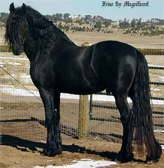FAQ – HEIRO
Healthy Equine Insulin Rescue Organical™
Dr. Reilly is the “Ask The Vet” expert on Equine Insulin Resistance for the AAEP.
![]() Click here to see 26 ways HEIRO is the Best Choice and why the winner over other products.
Click here to see 26 ways HEIRO is the Best Choice and why the winner over other products.
![]() Click here for 20 pages of in depth articles on Diet, Testing, Thyroid, and more.
Click here for 20 pages of in depth articles on Diet, Testing, Thyroid, and more.
 HEIRO is directly available all over Canada. Click here to see a list of retailers.
HEIRO is directly available all over Canada. Click here to see a list of retailers.
Can race and show on Heiro – 100% approved products – no need to withdraw.
Equine Insulin Resistance is the #1 Fastest Growing Cause of Laminitis in the World.
Do you and your horse need a HEIRO?
Important Facts You Should Know
- We are the only Horse Insulin Resistance problem supplement using top rated/highest quality/purity Natural Herbs. There is no higher standard. Your horse deserves the best of the best.
- We inform you of the labs used and freely show you the results. Other products give you no results or say its tested but don’t show you the lab or any test results.
- Highest concentration of Vitamin E of any supplement used in horses to help Insulin – All in only one tablespoon a day.
- The only site in the world with step-by-step instructions on how to test Horse Insulin Resistance to avoid false results. Consulted The Mayo Clinic, Harvard Medical, and John Hopkins Medical – These hospitals were just ranked #1, #2, and #3 in US News and World Report (July, 2008) as America’s best hospitals for Endocrinology. Insulin is an Endocrine hormone.
- The only Horse Insulin Resistance supplement to help Insulin that shows you sugar and starch at safe levels. Other products don’t or can’t show you this information or are actually high in sugar which makes no sense.
- HEIRO is certified High in Omega 3’s at over 9% – helps decrease inflammation.
- Economics- Only $47.95 dollars a month for HEIRO and the web site shows you how to save over $500 dollars a year using proper feeds. The 90-day HEIRO saves $22.00 every three (3) months, has free shipping and makes it about a dollar a day to treat.
- A site that will work with you, your Veterinarian, and your Farrier as a team to chart progress and answer questions. Call us – we will speak directly to you, get history, and talk with your doctor and Farrier if you want.
- Your Farrier is often the first line of defense – they see changes and have a baseline. Their input is crucial.
- These consults are FREE! Speak to doctors that have a large practice and see these horses often. Talk about nutrition, shoeing, and the status of your horse.
After on a double-dose of Heiro for 10 days, if your horse is not comfortable, CALL US. Let’s go over all the things we can do to eliminate insulin triggers in daily life.
What to expect – before and after test sample results from usage of HEIRO™?
| Horse | Breed | Date Tested Insulin Results prior to HEIRO |
Dated Tested Insulin Results while on HEIRO |
Status |
| “A” | Morgan | 5/22/07 334.8 ulU/ml |
7/14/07 33.8 ulU/ml – Normal |
On Pasture. Moves Well |
| “B” | Connemara | 2/6/07 173.9 ulU/ml |
3/7/07 47.1 ulU/ml– Normal |
On Pasture. Moves Well |
| “C” | Pony | 7/19/07 730.8 ulU/ml |
8/7/07 – 131.64 ulU/ml 11/21/07 – 87.68 ulU/ml |
On Pasture. Moves Well |
| “D”` | Quarter Horse | 10/31/07 171.7 ulU/ml |
2/17/08 11.4 ulU/ml – Normal |
On Pasture. Moves Well |
| “E” | Tennessee Walker | 8/24/06 126.9 ulU/ml |
10/26/06 28.5 ulU/ml – Normal |
On Pasture. Moves Well |
*Note the Dramatic Drops*
*IR horses have normal Glucose/high Insulin
*Normal post feeding levels are under 60 u/U/ml for Insulin
If over 60 uIU/ml or 430pmol/L for Insulin, your horse is Insulin Resistant.
Click here to see More Insulin Test Results for Horses on Heiro
Striker, of Pierson, Florida, licks his lips for HEIRO.
The 4 Easy Steps of the Heiro Program:
1. Hay Eating – In the right amount and right rate, your horse will have 24/7 forage, which will reduce insulin surging.
2. Rotation Balancer – higher protein in these lower insulin 3 ways. They are also low carb.
3. Thyroid Function – Low in all Insulin Resistance horses – now at bottom of normal range for T4 = sub-optimal. Need to be in top of normal range which is proven to help insulin sensitivity and help reduce nerve pain in feet.
4. Heiro – 1 scoop 2x a day for 10 days, then 1 scoop 1x a day.
*Note: if sore, will need a 5th step on pain management due to pain, increases insulin in all animals, so piles on top of metabolic insulin.*
What Is In HEIRO?
- The only Horse Insulin Resistance supplement that’s tested to ensure safe sugar and starch content. You have no idea of the levels of these important ingredients in other products.
- The only Horse Insulin Resistance supplement double-lab tested for mineral amounts. These tests show how safe HEIRO is on levels of over ten (10) important minerals.
- The only one that provides documented information regarding the Vitamin E level per scoop showing we are the highest level in the world. Vitamin E is an antioxidant, anti-inflammatory, and vascular supporter of the hoof.
| Ingredients: | 1) Natural Herbs: | Proprietary herbal blend exclusive to HEIRO containing natural herbs: Fenugreek, ocean kelp, blue-green spirulina algae, cinnamon, ginger, willow, peppermint, milk thistle, alfalfa. No fillers, no artificial colors or preservatives. All natural, great tasting blend. |
| 2) Vitamin E Concentrate | 128,190 IU/Ib | |
| 3) Magnesium Oxide Mineral | 6,360ppm |
| You list the products, so what makes HEIRO a proprietary blend? |
| The amount of each herb, the part of the plant used to make the herb, and the unique blending process to bring the Herbs into a combination with Vitamin E and Magnesium. Hundreds of Insulin tests were run on horses using different types and amounts until we got real results that showed in how the horse moves, their ability to get back on grass and lab test improvements. |
State of Pennsylvania Animal Diagnostic Laboratory System
Only 1.3 mg of Iron per scoop in Heiro. Heiro is the low iron choice to help your horse.
- Tested Melamine Free- state lab certified.
- Tested Pesticide Free- state lab certified.
- Tested Lead Free- state lab certified.
- Tested Drug Free- state lab certified.
HEIRO shows you actual lab tests for safety and purity – more than any other supplement.
HEIRO has the advantage of having a low iron level similar to grass hay. Some doctors are studying high iron possibly causing Insulin problems, so HEIRO is the choice for a tested safe low iron Insulin supplement.
HEIRO is using organics to provide natural, powerful, and safe minerals.
HEIRO has been tested extensively for safety and content.
Blue-Green Algae in HEIRO is:
A. Tested negative for heavy metals (Arsenic, Cadmimum, Lead, and Mercury).
B. Tested negative for Microcystin, Aflatoxin, Anatoxin-A, Cylindrospermopsin, and Saxatoxin.
C. Tested negative for Salmonella, E-Coli, and Staphaureus.
D. Tested high in Protein, High in Omega-3. GMO and Gluten Free Certified.
Equi-Analytical Laboratories
The top commercial feed testing lab in the country. Results show low sugar (ESC) and low starch so it is SAFE. Results show a protein level of grass hay and a non-fiber carbohydrate (NFC) in the normal range of beet pulp. Results show a HUGE Vitamin E amount that comes to over 8,000 IU/oz. That is, by far, the best level of any supplement. The test results confirm the significant levels of ten (10) electrolytes and minerals.
 Report Date: 12-08-08 |
||
| % Moisture | 12.6 | |
| % Dry Matter | 87.4 | |
| Dry Matter | ||
| Digestible Energy (DE), Mcal/lb | 2.33 | |
| % | g/kg. | |
| Crude Protein | 7.9 | 35.6 |
| Acid Detergent Fiber (ADF) | 19.2 | 87.3 |
| Neutral Detergent Fiber (NDF) | 18.7 | 85.0 |
| ESC (Simple Sugars) | 3.8 | 17.1 |
| Starch | 0.5 | 2.2 |
| Non Fiber Carb. (NFC) | 30.7 | 135.05 |
| Water Soluble Carb. (WSC) | 4.7 | 21.3 |
| % | g/lb. | |
| Calcium | 0.47 | 2.14 |
| Phosphorus | 0.17 | 0.78 |
| Magnesium | 0.69 | 3.13 |
| Potassium | 0.47 | 2.13 |
| Sodium | 0.309 | 1.401 |
ppm |
mg/kg. |
|
| Iron | 118 | 54 |
| Zinc | 32 | 15 |
| Copper | 4 | 2 |
| Manganese | 23 | 13 |
| Molybdenum | 2.1 | 0.95 |
| 100% Dry | ||
| Vitamin E, IU/Lb | 128,190 | |
![]() Report date: February 2013 – Iodine – 12.7 ppm
Report date: February 2013 – Iodine – 12.7 ppm
![]() HEIRO is the ONLY Equine Insulin Resistance product showing Iodine levels. At 12.7 ppm, 1 tablespoon scoop dose is .12 mg a day.
HEIRO is the ONLY Equine Insulin Resistance product showing Iodine levels. At 12.7 ppm, 1 tablespoon scoop dose is .12 mg a day.
What Is Not In HEIRO?
- HEIRO is not cooked or processed – at times you will actually see the entire seed of the herb in HEIRO. Cooking takes vitamins/minerals out.
- Unsafe amounts of unknown items – HEIRO’s herbs are natural and double-lab tested for content and safety. In 2000, the State of California Department of Health Services put out a warning that five (5) Chinese herbal mixtures for Diabetes contained two (2) pharmaceutical drugs. Vet. Practice News, May 2006.
- No fillers – this is why you only give one (1) tablespoon a day.
- Not a diluted tea – again, vitamins and minerals are lost.
- No sugar additives – HEIRO is the only supplement tested to be low in sugar and starch. Our starch is only 0.5% and our simple sugar is only 3.8%.
- No artificial flavors or preservatives. No artificial colors. All natural.
- No untested, unknown sources of herbs. HEIRO contains only the best, top rated, 100% Natural Herbs. There is no finer source of herbs for people or horses.
- PA state lab tested negative for Heavy Metals.
- No melamine– state lab certified.
- PA state lab tested negative for drugs, pesticides.
- PA state lab tested negative for Salmonella, E. Coli, Listeria.
In today’s world of tainted dog and cat foods and baby formula, you need to know HEIRO is safe.
health. This product is not intended to diagnose, treat, cure, or prevent disease.
What is Horse Insulin Resistance?
1. Abnormally high Insulin levels cause metabolic changes leading to increased fat, overweight, fatigue, and eventually Laminitis.
2. Why high Insulin? Inability to respond and use Insulin the body produces because the Insulin is not functioning properly; higher and higher Insulin levels are needed to achieve the same effect. These high levels of Insulin damage the body.
Does My Horse Have Horse Diabetes?
No. Horses do not get Diabetes like people.
Equine Insulin Resistance is mistakenly called Horse Diabetes, Horse Pre-Diabetes, Horse Early Stage Diabetes, or Horse Type 2 Diabetes – for years and it created confusion. Horses and people can both get Insulin Resistance, but horses do not go to the next step of Diabetes. In people, they can advance on to Diabetes if Insulin Resistance is not controlled.
In Horse Insulin Resistance: Blood Insulin is high but Blood Glucose (Blood Sugar) is normal for both horses and people. In people, Early Stage Type 2 Diabetes occurs if Insulin Resistance is not controlled: Blood Insulin is High, Blood Glucose is also high. Horses do not get this type of Diabetes. In people, if Early Stage Type 2 Diabetes is not controlled, the Pancreas cells “burn out” and can’t make Insulin any more, so Blood Sugar goes super high and Insulin shots are required. This is called Late Stage Diabetes. Again, horses do not get this type of Diabetes.
|
Blood Insulin |
Blood Glucose |
|
| Horse and Human in Insulin Resistance |
High |
Normal |
| Human Early Stage Diabetes |
High |
High |
| Human Late Stage Diabetes |
Low |
Sky High |
Rarely in horses, Glucose values can be elevated such as in Equine Cushings, extreme infections, or high fevers. If the horse is already having Equine Insulin Resistance with high Insulin, then will see high Insulin and High Glucose. This is not true Horse Diabetes but an overlapping of diseases. Once the horse is treated, Glucose levels will drop back down to normal.
![]() Dr. Reilly is the “Ask The Vet” expert on Equine Insulin Resistance for the AAEP.
Dr. Reilly is the “Ask The Vet” expert on Equine Insulin Resistance for the AAEP.
What are the signs of Horse Insulin Resistance?
1. Laminitis– acute or chronic. Repeat episodes over the years, pasture turnout stopped but still happens, secondary to Cushings disease, more often in ponies, occurs in the middle of the winter when there is no grass around. The horse only gets hay and no grain and still happens.
2018 European Internal Medicine Consensus Validates Heiro Program
1. EMS (Equine Metabolic Syndrome) – not a disease, only a list of risk factors for endocrinopathic laminitis via high insulin. (Insulin Resistance).
2. Laminitis is the #1 clinical consequence of EMS.
3. 22% of horses in USA have EMS. #1 risk factor = obesity. Genetics is another big factor. 18% estimated to have it that are healthy, non-laminitis (inapparent but have it).
4. Oral Karo light syrup dynamic challenge test is the best test.
5. Cushings can cause insulin changes so if there are signs, need to test for it.
6. “Muzzles have added benefit of increasing forage time and exercise.”
Dr. Reilly: What we have pushed for over 10 years is now accepted – wonderful.
7. Metformin – oral bio availability poor in horses, does not have systemic effects on insulin.
8. Thyroid powder well tolerated, helps body mass to reduce, proven to help insulin sensitivity.
Dr. Reilly: What we have pushed for over 10 years is now accepted – wonderful.
9. Horses that improve insulin dysregulation rapidly might be able to resume restricted grazing relatively quickly.
Dr. Reilly: what we have pushed for over 10 years is now accepted – wonderful
![]() Click Here for Article
Click Here for Article
 2. Overweight– either by diet, lack of exercise, or genetics. 25% of people with Insulin Resistance due to genetics. On no grain or little grain and stays big, exercise and still big. Cresty neck often seen.
2. Overweight– either by diet, lack of exercise, or genetics. 25% of people with Insulin Resistance due to genetics. On no grain or little grain and stays big, exercise and still big. Cresty neck often seen.
3. Cushings– 2 ways Insulin Resistance is linked with Cushings.
a. Many with diagnosed Cushings also have Insulin Resistance but this second condition is not diagnosed, so on Pergolide but still does not do well.
b. Recent study shows Cushings in horses is massively under diagnosed, so if these are missed, then more are missed with both Cushings and Insulin Resistance.
c. Dr. Grubbs, 2016 Veterinary Internal Medicine Forum. 45% of Cushing horses have high insulin also.
See the article showing as horses get older, they probably have both conditions
4. Age– as horses get older, they lose muscle and gain fat. Fat production goes way up in Insulin Resistance because Insulin makes fat and fat produces toxins leading to an increase in Insulin. Also as horses age, Cushings incidence goes up.
5. Fatigue– can not exercise as well as in the past. They become dull and resist riders.
6. Certain Breeds– Breeds that were designed for a rugged existence seem to be more susceptible due to today’s easier surroundings. These breeds include Quarter Horses, Morgans, Paso Finos, Mustangs, Pony breeds, Tennessee Walkers, and Rocky Mountain Horses.
7. Genetics– The National Institute of Health (NIH) has shown a genetic trait in Insulin Resistance. Often the mare or stallion had Insulin Resistance and now the offspring start to show signs.
8. History behind the horse– The previous owner warns the new owner that the animal must live on a dirt lot and never be turned out. They are the horses who are fed very little food and stay “fat on air”. Some times Pergolide helped in the past but is no longer effective.
 9. Winter Foot Pain – Even with no grass in sight, the feet get sore. Less exercise, loss of fresh grass, vitamins/magnesium, cold stress, cortisol increase, seasonal ACTH increase, longer fasting periods between food intake all contribute.
9. Winter Foot Pain – Even with no grass in sight, the feet get sore. Less exercise, loss of fresh grass, vitamins/magnesium, cold stress, cortisol increase, seasonal ACTH increase, longer fasting periods between food intake all contribute.
10. Abnormally Foot Sore after routine trimmings by Farrier. Takes several days after scheduled trimmings to recover soundness. This is an Insulin problem not a bad trim job. The Farrier is the key to a successful program.
Genetic lock– diet/exercise is not controlling Insulin. Owners have tried multiple management techniques but the horse is still foot sore, has repeat laminitis, can’t be turned out on grass, and stays big on little food. Also the horse is a candidate for future problems and the owner would like to avoid a problem instead of waiting for the problem to occur. These are the horses the HEIRO program can help.
11. Horse insulin resistance creates cardiac changes – new finding.
 The heart is directly affected by Insulin Resistance in a 2017 study from a Swiss Veterinary School. Heart rate is higher (37% had over 48 beats a minute) than the controls which accrued 40-41 beats per minute. This is important for Vets to know due to the heart rate is a parameter measured for health status.
The heart is directly affected by Insulin Resistance in a 2017 study from a Swiss Veterinary School. Heart rate is higher (37% had over 48 beats a minute) than the controls which accrued 40-41 beats per minute. This is important for Vets to know due to the heart rate is a parameter measured for health status.
Also of interest, the Insulin Resistant horse’s Insulin resting rates were only 10 uU/ml, but on a challenge they jumped way up to 145 uU/ml, further showing the need for a challenge to find true Insulin Resistant horses. The heart, itself, had changes in wall thickness in areas in Insulin Resistant horses also. Insulin Resistance effects not just the feet, but total body systems. ![]() Click here to see Dr. Heliczer’s article in JAVMA on Cardiovascular findings in ponies with equine metabolic syndrome.
Click here to see Dr. Heliczer’s article in JAVMA on Cardiovascular findings in ponies with equine metabolic syndrome.
Why Laminitis in Insulin Resistance?
1. Insulin itself– at high levels can damage vessels. A recent Australian study showed that giving a horse a shot of Insulin causes profound Laminitis clinically and microscopically. K. Asplin, Australian Government Rural Industries Research, November 2007.
2. A University of Kentucky study shows that inflammatory proteins elevate when the horse has Insulin Resistance and this irritates blood vessels leading to blood flow disruption to feet. A. Adams, J. An. Sci., 2007, Vol. 85.
![]() Click here for 2018 study proving that high insulin exposure results in laminae damage
Click here for 2018 study proving that high insulin exposure results in laminae damage
3. Insulin Resistance results in both reduced capillary recruitment and reduced vasodilation in animal models and in humans. Diabetes Vascular Disease Research 2007, Microcirculation Journal 2007.
4. “Although pro-inflammatory effects and vascular effects of Insulin Resistance may be difficult to separate, it is clear that either or both occurring in horses with Insulin Resistance could precipitate Laminitis by affecting blood flow or by induction of pro-inflammatory state.” Dr. McGowan, Journal of Equine Science 2008.
5. Extreme cases – if hyperglycemic, this promotes inflammatory medicators leading to irritated blood vessels.
6. First time considered as a possible cause of Laminitis by Dr. Reilly – Foot Neuropathy. In diabetic people, nerves to feet become desensitized – if in a horse, could have Laminitis but not know of damage as readily. If the horse shows no pain, Laminitis spreads until critical. We do not get a warning. Why a possible? 70,000 foot amputations a year in the USA of Insulin Resistance/Diabetic people.
7. Overweight – all these problems compounded by the stress of high weight.
How Long Does My Horse Stay On HEIRO?
A. Horses with past Laminitis, sore feet, or chronic abscessing are going to need daily HEIRO year round to maintain their health. After they improve, they are not cured of Equine Insulin Resistance, they are controlling it to avoid repeat damaging episodes of Laminitis.
 B. Horses with no past Laminitis issues that are showing signs of Equine Insulin Resistance and are in areas of snow, may use HEIRO seasonally from March 1 – December 1. Many owners do keep their horse on year round due to how well the horse does. Horses in areas of year round fresh grass grazing will require year round HEIRO to help control Insulin and keep Laminitis away.
B. Horses with no past Laminitis issues that are showing signs of Equine Insulin Resistance and are in areas of snow, may use HEIRO seasonally from March 1 – December 1. Many owners do keep their horse on year round due to how well the horse does. Horses in areas of year round fresh grass grazing will require year round HEIRO to help control Insulin and keep Laminitis away.
How Do You Test for Horse Insulin Resistance?
For more details on the blood test, how to handle the blood, and where to send ![]() please go to How to Test Correctly for Insulin Resistance in Horses on the main menu.
please go to How to Test Correctly for Insulin Resistance in Horses on the main menu.
After you have been on HEIRO for 60 days, you will want to retest your horse’s Insulin and Glucose levels.
What Heiro™ Does That Other Products Do Not
26 Ways!
| Heiro™ | Others | Winner | ||
| 1. | Only product designed to get horses back on Pasture | Yes | No | Heiro™ |
| 2. | Only product designed to help with winter foot pain | Yes | No | Heiro™ |
| 3. | Free consults for owners with an Equine Veterinarian | Yes | No | Heiro™ |
| 4. | Free consults with the owner’s Farrier and doctor with an Equine Veterinarian | Yes | No | Heiro™ |
| 5. | Free web site on best diet/snacks and test protocols | Yes | No | Heiro™ |
| 6. | Economical price, money-back guarantee | Yes | No | Heiro™ |
| 7. | Helps Cushing horses with Insulin problems | Yes | No | Heiro™ |
| 8. | Before and after tests showing it works | Yes | No | Heiro™ |
| 9. | Highest concentration of Vitamin E | Yes | No | Heiro™ |
| 10. | Natural – No fillers, No artificial color/preservatives | Yes | No | Heiro™ |
| 11. | Only product using pharmaceutical-grade Magnesium | Yes | No | Heiro™ |
| 12. | NRC top-rated bioavailability form of Magnesium | Yes | No | Heiro™ |
| 13. | Freshness dated for top performance | Yes | No | Heiro™ |
| 14. | Smells Great | Yes | No | Heiro™ |
| 15. | Tastes Great | Yes | No | Heiro™ |
| 16. | Only One Tablespoon Daily | Yes | No | Heiro™ |
| 17. | Safe: Natural Herbs | Yes | No | Heiro™ |
| 18. | Safe: Certified Melamine Free | Yes | No | Heiro™ |
| 19. | Safe: Certified Lead Free | Yes | No | Heiro™ |
| 20. | Safe: Certified Drug Free | Yes | No | Heiro™ |
| 21. | Safe: Certified Pesticide Free | Yes | No | Heiro™ |
| 22. | Safe: Certified Low Sugar | Yes | No | Heiro™ |
| 23. | Safe: Certified Low Starch | Yes | No | Heiro™ |
| 24. | Safe: Certified Low Fructan | Yes | No | Heiro™ |
| 25. | Safe: Certified Low Iron | Yes | No | Heiro™ |
| 26. | Safe: Gluten Free, Non-GMO | Yes | No | Heiro™ |
Proper diet and exercise is essential for horse health. This product is a supplement to help maintain horse health. This product is not intended to diagnose, treat, cure, or prevent disease.











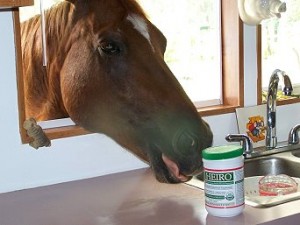












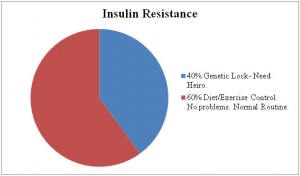


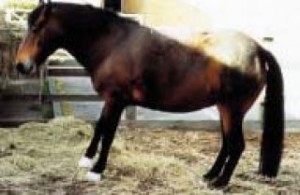
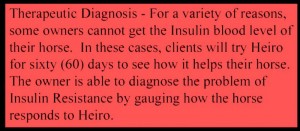



; ?>/wp-content/themes/twentyten/img/NMImacLogo_150.jpg)
